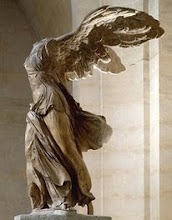
"Al atardecer, cuando Miguel regresó de la mina, dieron un paseo en dirección al castillo. Oyeron unos golpes acompasados que venían de una de aquellas estrechas calles. Preguntaron a un lugareño qué eran aquellos martillazos, y éste les informó:
--Son del taller de Higinio Lorente. Es un forjador de primera. Vayan ustedes a verle trabajar.
Higinio era un maravilloso artesano del hierro, el más hábil forjador de armaduras de España, quizás del mundo entero.
Cuando los Zumeta se presentaron en la puerta de la forja, que estaba abierta, Higinio les hizo pasar.
El taller no correspondía, en cuanto a su aspecto, a lo que allí se hacía. Nada de lóbregas profundidades, ni de montones de carbón y escorias, ni de paredes calcinadas, ni de enormes fraguas. Todo estaba limpio y ordenado, y lo único antiguo era el fuelle. El local era reducido, y las paredes, salvo en la zona donde estaban la fragua y el yunque, aparecían blanqueadas con varias capas de cal.
En la fragua, más bien pequeña, las brasas eran atizadas con el fuelle de antiquísimo modelo, accionado a mano por un mozalbete desgarbado, hijo del forjador. Completaban el material de trabajo varios martillos de diferentes formas y tamaños, tenazas, limas y demás herramientas de uso corriente.
Higinio era un hombre corpulento, de anchas espaldas, en cuya cara, de facciones nobles, sus ojos inteligentes miraban con serenidad. Hablaba pausadamente, y quien conversara con él se daba cuenta de que aquel auténtico artista vivía únicamente para aquello que estaba haciendo". (Continuará)
-------------------------------------------------------------------------------------------------------------
HIGINIO'S FORGE (1)
When Miguel came back from the mine in the late afternoon, they went for a walk towards the castle. They heard rhythmic thumps coming from one of the narrow streets. They asked one of the locals what was that hammering. He told them:
--They're from Higinio Lorente's workshop. He is a great forger. Go and see him work.
Higinio was a marvellous cast iron craftsman, the best armour forger in Spain and, maybe, the whole world.
When the Zumetas appeared at the forge's open door, Higinio asked them to come in.
The workshop didn't seem what one would expect would correspond to what was done there. No gloomy, dark interiors with strewn carbon and debris. No blackened walls nor huge forges. Everything was neat and clean and the only antique were the bellows. The place was small and the walls, except where the forge and anvil were, were white with various layers of whitewash.
In the rather small forge, the hot coals were stirred up by a very old model of bellows handled manually by a young ungainly teenager who was Higinio's son. The working tools were various hammers of different shapes and sizes, pliers, limes and other usual utensils.
Higinio was a well-built, broadbacked man with a noble-featured face; his intelligent eyes had a very serene look. He spoke slowly and whoever talked to him realized that he was an authentic artist that lived only for his work. (It will continue)






























15 comentarios:
Parece un coloso.
Si hubiera sido viudo lo podríamos haber casado con Eloísa.
Pero ya es tarde.
Besos.
La fragua siempre me ha parecido un lugar mágico: entre lo tenebroso y el milagro.
Besos.
Forgeries used to be meeting places for men in the old times, when there was little to do. They used to be busy places to have a chat with the people from the neighbourhood. I suppose they were warmer places because of the fire. It didn’t matter they were noisy.
Estos relatos tuyos terminarán por engancharme por completo, querida Merche, me gustan un monton.
Besos...!
TORO, sí, hubieran hecho una buena pareja... Besotes, M.
PEDRO, seguro que son así. Yo nunca he visto una in situ. Besotes, M.
PANCHO it's not forgeries! but forgers. The former means "falsificaciones". I can understand that they would be good meeting places in cold days mainly because of the heat but the noise must have been deafening! Besotes, M.
CORNELIVS, pues que bien pero siempre me dices ¡lo mismo! Besotes, M.
Esperamos la continuación.
Un abrazo estimada Madrina
TEngo unos amigos de mi padre, que siempre trabajaron con la fragua...a mi más que tenebroso, me parecía fantástico ver ese trozo de hierro al rojo y ese mazo moldeándolo a fuerza de golpes...aún hoy siguen trabajandolo....besos
Ahora quedan pocos Higinios . . .
BESOTES HERMOSA!
KETY, acabo de colgarla. Besotes, M.
TUCCI, me alegra saber que aún existan estas fraguas. Yo he visto cómo se hace el cristal pero nunca el hierro. Besotes, M.
STANLEY, sí, MUY pocos. Besotes, M.
En Toledo, supongo que será típico, todo eso de los herreros y forjadores. Recuerda que se hacen muchas espadas y armaduras.
AMELCHE, por supuesto Toledo tiene fama, entre otras muchas cosas, por sus forjaduras. Besotes, M.
This part of the story reminds me of an iron workshop that I saw in Tripoli Lebanon--except is was the old kind, not the white washed walls of this one described. The one I saw was blackened and dark, no windows, like it had stepped out of time 500 years.
NORTHSHORE, that's probably how they are--sinister and black. I've never seen one. One of my bloggers, TORO, says that Higinio is a hunk, and that if he would've been a widower we could have married him to Eloise! Hugs, M.
Una fragua? lo primero que se me viene es calor y calor, y personas muy fuerte y curtidas.
Un beso cielo
¡Impresionante foto!
Besos
Publicar un comentario